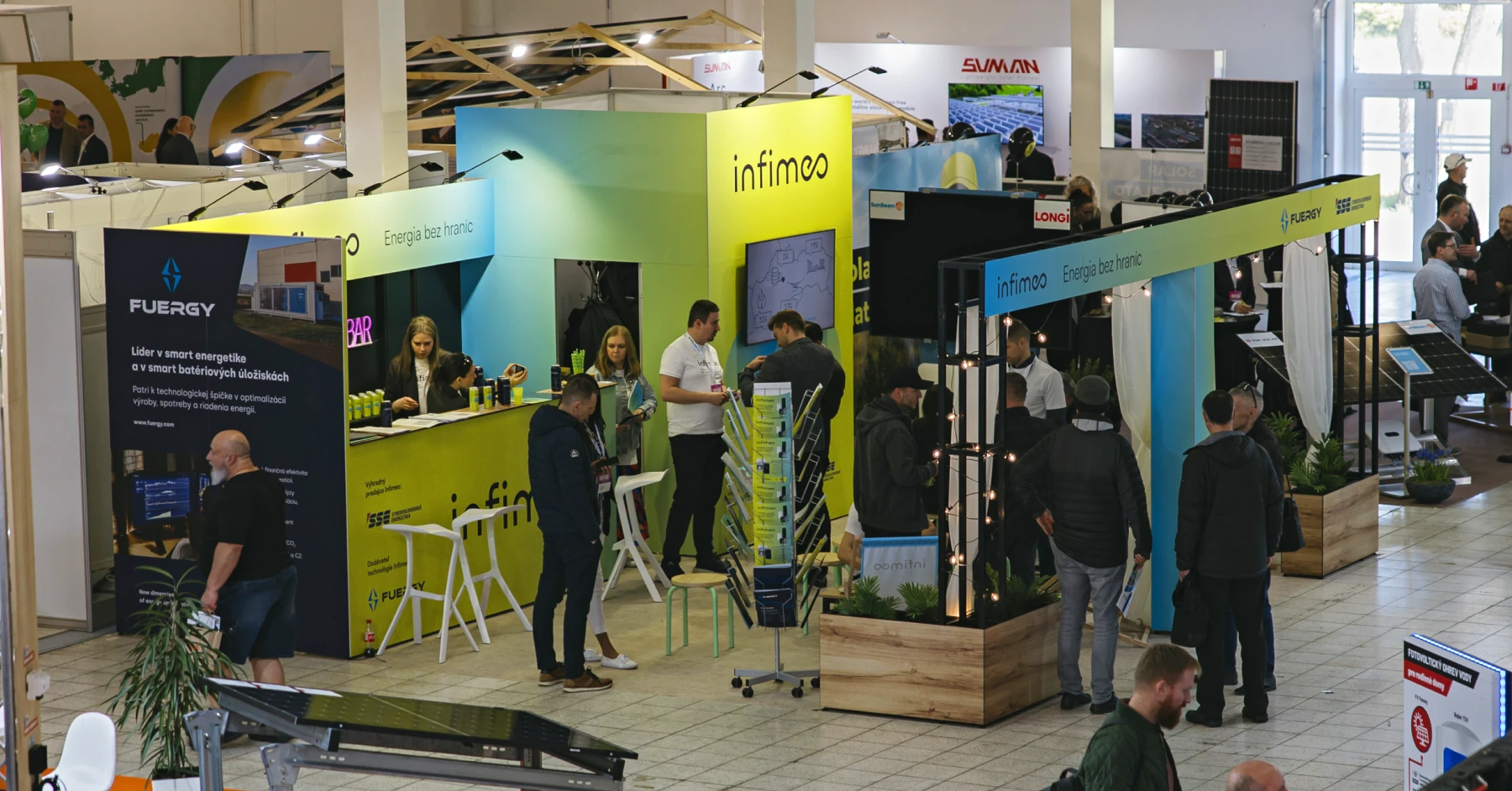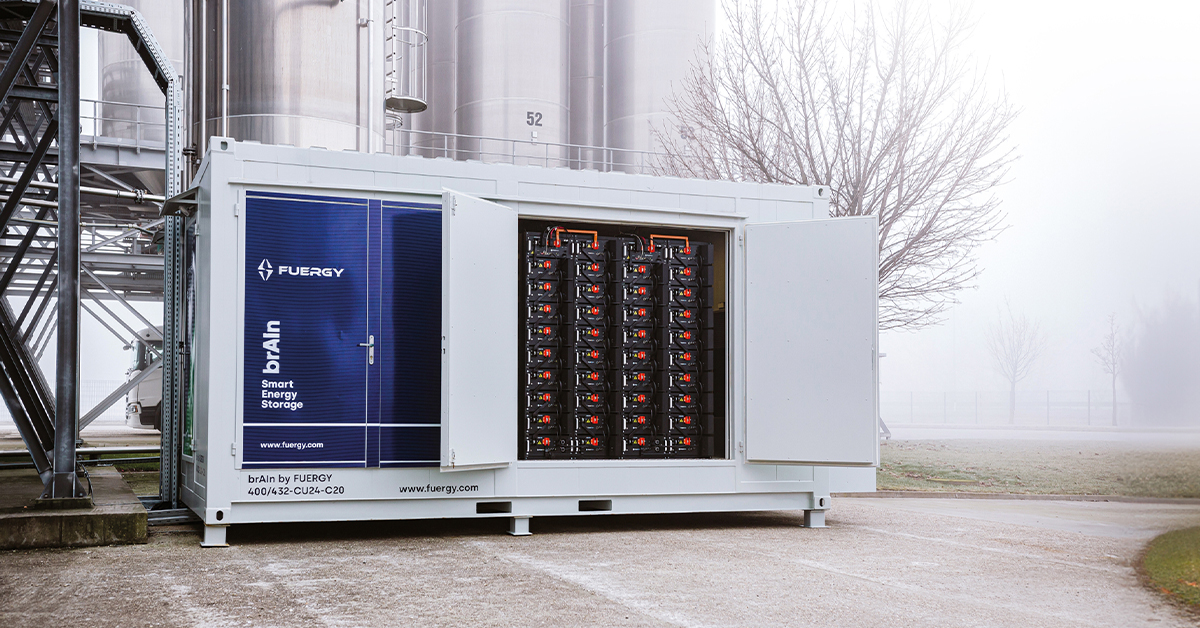
The brAIn by FUERGY is not just an ordinary accumulator that balances the disharmony between green electricity production and consumption – the so-called Duck curve. It is a smart device that helps both the customer and the transmission system save not only money, but also unnecessary energy waste. Solar panels are not even necessary for implementation of the brAIn battery storage.
For those who don't know much about energy, it's a good idea to start from the very beginning. And that is by understanding the basic principles of electricity production, distribution, and consumption:
-
Each electricity consumer (i.e. delivery point) buys electricity from one of the electricity suppliers on the market.
-
Based on historical data and a variety of customer consumption forecasts, as well as announced outages, the electricity supplier prepares a consumption plan of his entire customer portfolio for the following day, D -1, and buys the respective amount of electricity from producers. On day “D”, according to the plan divided into 15-minute intervals, power plants and other sources produce the required amount of electricity.
-
However, during the day “D”, the real electricity consumption of the delivery points fluctuates and doesn’t always proceed as planned. Certain deviations from the plan emerge, for which the electricity supplier often pays substantial penalties, but we will come to that later.
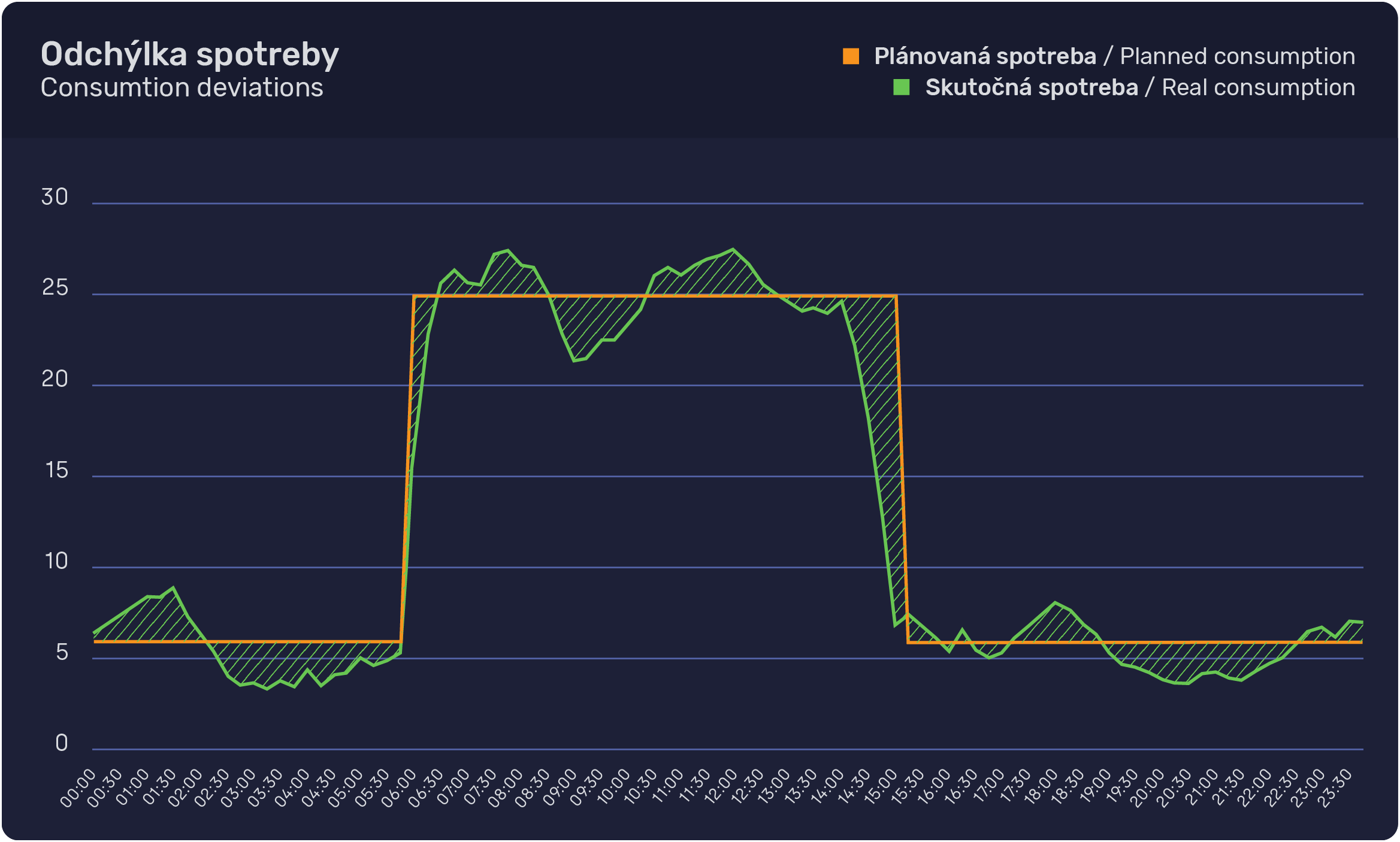
- At each moment, there must always be as much electricity in the power grid as is actually consumed. The electrical frequency in the transmission system then ranges between 49.8 to 50.2 Hz. Outside of this range, there is a risk of blackouts and damage to equipment and appliances connected to the power grid. Fluctuations in electricity consumption and inaccurate planning by electricity suppliers thus result in the transmission system being either in surplus, i.e. there is too much electricity in the power grid, or in shortage, i.e. additional electricity needs to be supplied. This is where ancillary service providers come into play. They supply or withdraw electricity from the power grid during the day just as is needed and for this service, get financially remunerated by the transmission system operator (TSO).
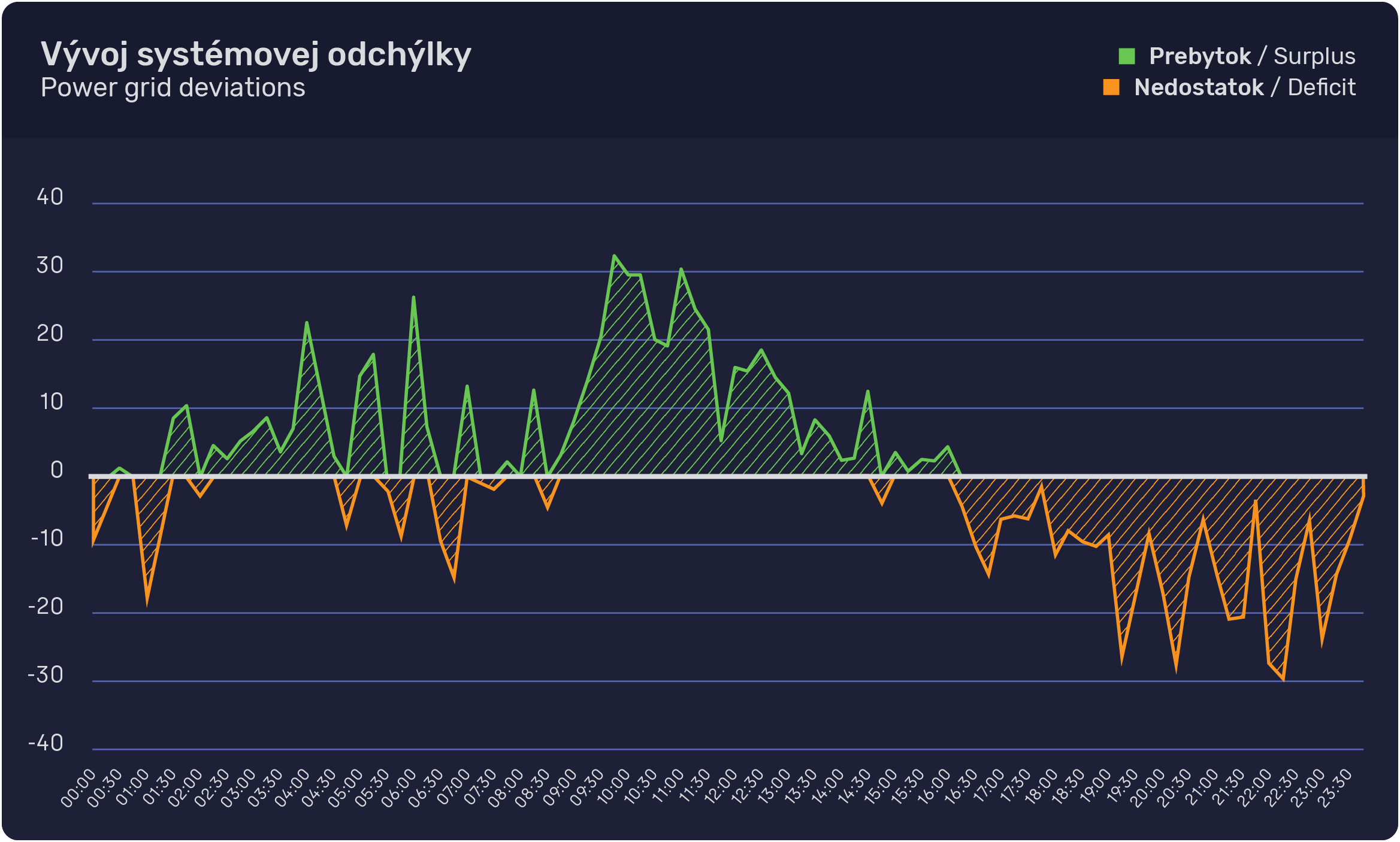
- Let's go back to the penalties paid by electricity suppliers for inaccurate plans. These penalties are only assessed when their activities place a greater burden on the power grid. For example, when customers consume more electricity than planned at a time when the power grid is experiencing a shortage. In other words, there was a lack of electricity in the transmission system and customers consumed more than they should have according to the plan. The electricity supplier is then fined by the TSO. These penalties cover the financial costs incurred by the ancillary service providers, who will supply the missing electricity immediately. However, if the supplier’s customers consume less electricity than planned and at the same moment, the power grid is in shortage, the power grid was “helped”. The TSO remunerates the supplier as it would any other ancillary service provider. This is the situation that the brAIn energy storage system tries to achieve by the well-timed charging and discharging of batteries. In other words, the brAIn battery storage provides a non-certified ancillary service, which is just as efficient yet emission-free.
What is the difference between the brAIn and a basic battery system?
Basic storage without any special energy management or interconnection with the electricity supplier's systems is primarily a monitor of the performance of the solar panel system. If its power output is high, the delivery point runs on the generated green electricity and stores any excess electricity in the battery. If the power output is low, the stored energy is consumed and the delivery point then automatically switches to electricity from the power grid.
However, it may happen that the consumption of the delivery point is too low at the time when the solar panel system produces the most electricity. If the battery storage is fully charged at that moment, the produced green energy might end up unused. In practice, companies with their own solar panel system are able to use only about 50% of the green electricity produced, and just about 60% of the basic battery storage capacity.
Capacity utilization: Basic battery storage vs. the smart battery storage brAIn by FUERGY
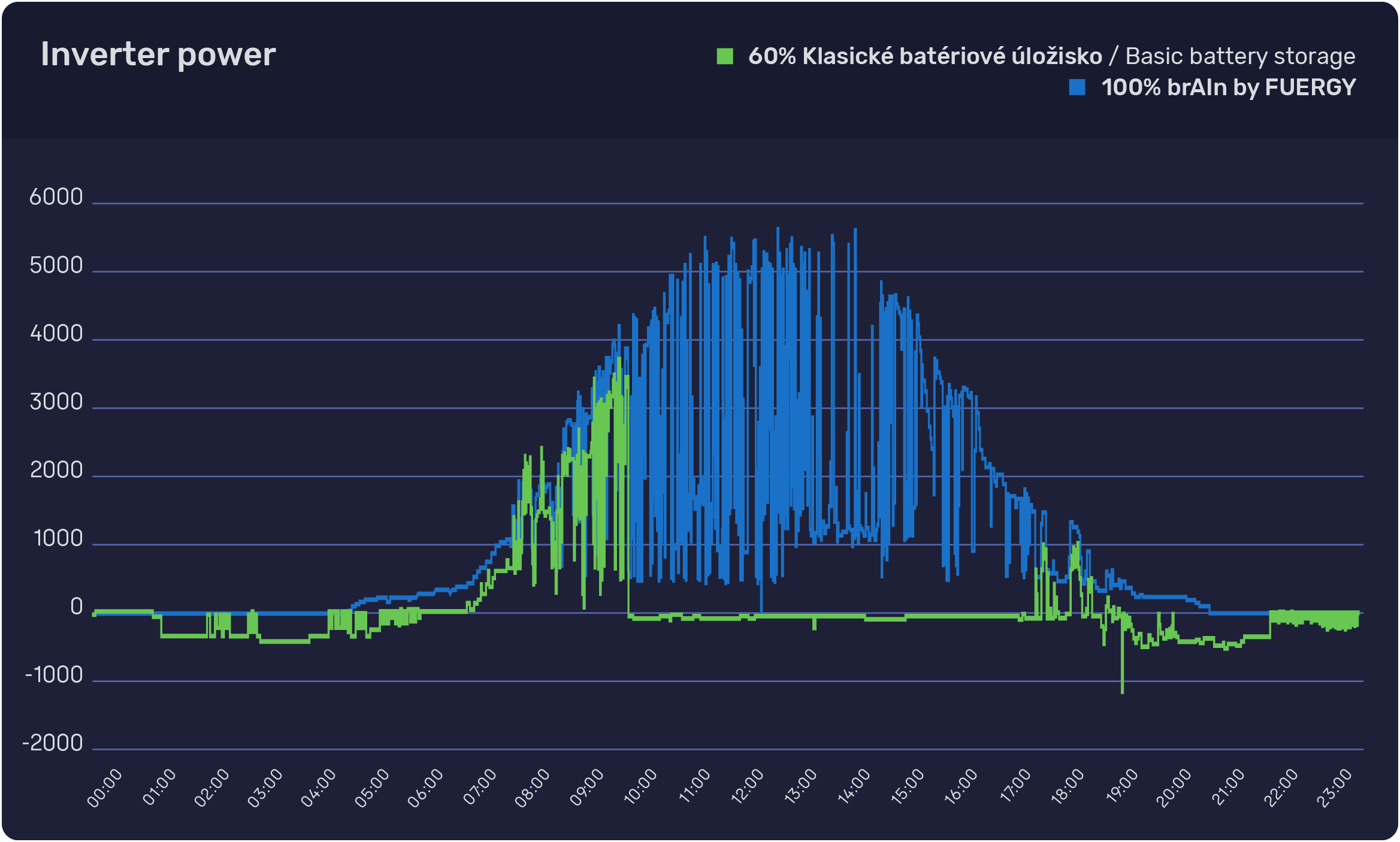
The battery brAIn uses 100% of its storage capacity and helps to use up to 90% of the electricity generated by solar panels. The size of the battery storage is determined according to the delivery point’s production and consumption diagram so that it can be charged and discharged several times throughout the day, and thus its capacity used to the maximum extent. The device is installed behind the smart meter, which means that the battery storage is part of the delivery point, not the power grid.
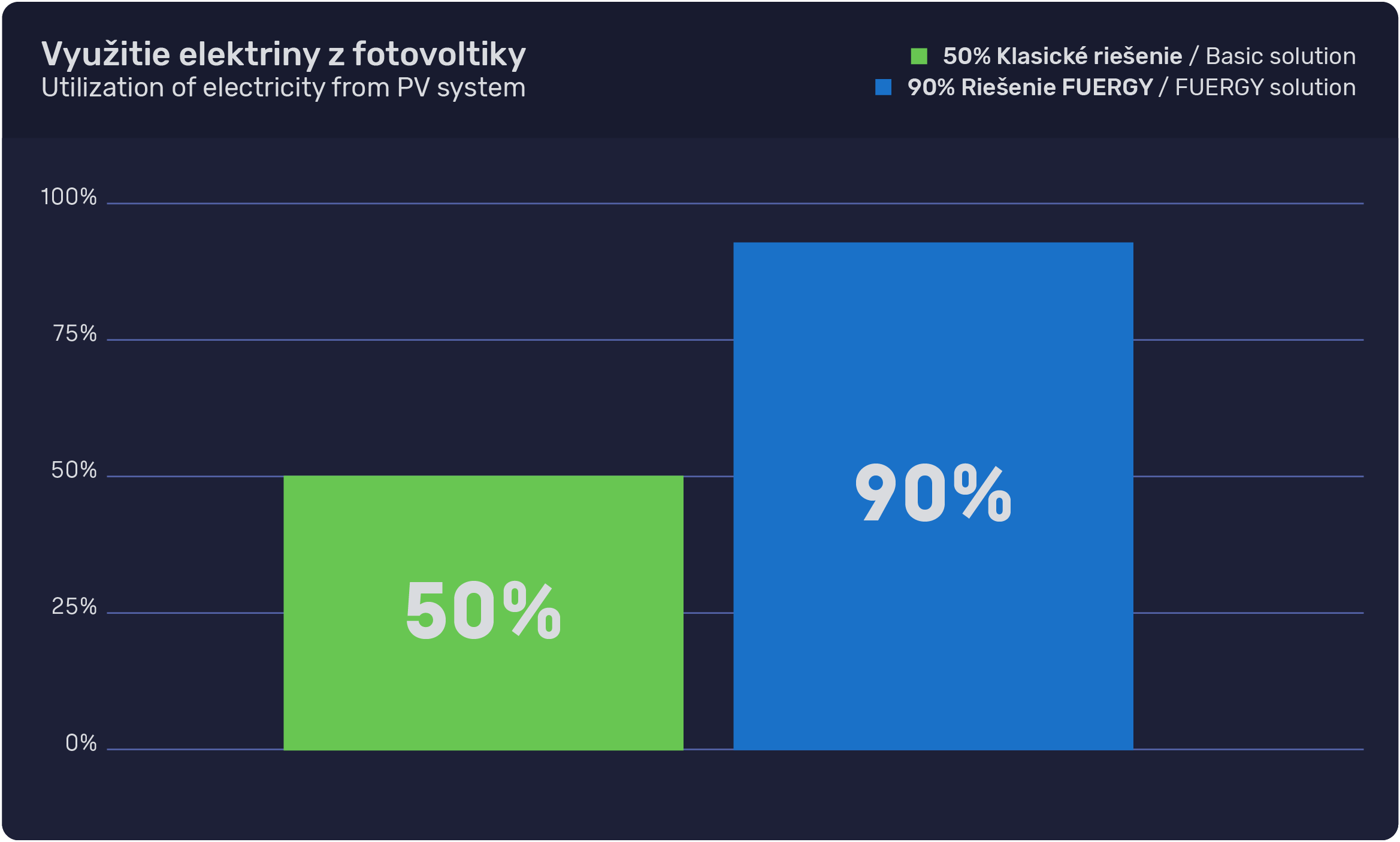
How does the brAIn work?
The FUERGY software constantly analyzes the electricity production and consumption of the delivery point, the situation in the power grid, the energy supplier's systems, the weather forecast and many other factors. Thanks to the artificial intelligence implemented in the prediction algorithms, the software can more efficiently evaluate when and with what amount of electricity it will be most advantageous to charge and discharge the battery.
And it does so without restraining the operation of the delivery point whatsoever. As much electricity as needed is always available, no matter where the electricity comes from – the power grid, solar panels or battery storage. The brAIn simply ensures that the electricity comes from the most financially viable option.
In times of surplus, the brAIn charges batteries with electricity from the grid, boosts the power output of energy-intensive technologies or even charges electric vehicles (EVs). When electricity is not available in the power grid, consumption from the grid is reduced as much as possible, so stored energy is utilized, the output of technologies reduced or electricity from the EV batteries used (providing the FUERGY software ensures that the EV battery will be recharged with cheaper electricity before the vehicle is in use again).
Lower energy bills even without a solar panel system
By generating its own green electricity through a solar panel system, the customer lowers consumption from the power grid. The brAIn smart battery storage helps to shift electricity consumption over time. This means that the amount of electricity from the power grid remains the same, consumption simply happens when the power grid needs it. For every "help" provided to the power grid, i.e. provision of a non-certified ancillary service, the customer gets financially rewarded by the transmission system operator, which ultimately reduces the customer's total electricity costs.
What are the other benefits of the brAIn?
In addition to revenue from the provision of ancillary services, the brAIn can also optimize other costs associated with electricity consumption and supply. For example, it compensates for reactive power and prevents exceeding reserved capacity (in some cases, even lower it for a given delivery point).
The device can also serve as a back-up power source, providing effective protection during short-term power outages or micro-power outages, which can cause major losses for some businesses. In that case, a part of the storage capacity stays constantly charged and the software does not recognize it. However, such limitation translates into a lower financial effect from battery utilization, and thus a slightly longer payback period.
Energy optimization happens in real-time. Through the FUERGY web application, brAIn users can access online data on the production and consumption of the delivery point as well as the savings achieved.
What is involved in connecting a high-capacity battery storage to the distribution network?
Similar to a new delivery point or installation of solar panels, connecting battery storage to the distribution network requires approval of the relevant distribution company. However, the storage must meet a number of technical standards and administrative requirements. Meeting strict technical standards without sufficient know-how and experience could be quite difficult. To date, FUERGY is the only commercial company in Slovakia that has successfully connected high-capacity storage systems to the distribution network and is able to operate them with an attractive economic return.
What happens if a battery storage is not properly managed?
Even if the storage is connected to the distribution network, it needs to be controlled properly and with care. Otherwise:
1. The capacity of the storage is not fully used
As mentioned above, less than two-thirds of the capacity of basic battery storage is typically used. A situation with one-third of the capacity unengaged means that the payback period of the battery storage is unnecessarily extended. The brAIn battery storage is able to perform multiple tasks and uses its capacity to the absolute maximum. This is why the payback period for the brAIn storage alone can be as short as two years and for the brAIn paired with a solar panel system, as short as four years.
2. Usable storage capacity rapidly decreases
The storage system must be handled with the utmost care. This is the only way to guarantee its long life. For this still relatively expensive technology, it is a non-negligible parameter. Each type of battery has its own technical specifications and requirements, with a usable capacity that naturally decreases over time. For the batteries we use in the brAIn, it is around 2.5 % per year. In case of improper charging and discharging, capacity can decrease by 30 percent year-on-year, which significantly degrades the unit and, in many cases, it will not even "live" long enough to pay back the investment costs.
3. The batteries will simply burn out
The most drastic scenario for improper battery storage management is its burnout. Similar to the rapid reduction of usable storage capacity, the financial loss in such a case is huge. In our brAIn systems, we only use batteries with TÜV certification based on LiFePO4 technology, where there is only a minimal threat to life. In the event of a malfunction, LiFePO4 batteries will start to smoke but never catch fire. That is why, unlike Li-Ion battery storage systems which can only be placed outdoors due to the risk of fire, brAIn systems are suitable both for exterior and interior installations.
As you can see, just as with other skilled jobs, not anyone can install high-capacity battery storage for you. But if you rely on experts, your battery storage system will save you more money for a greater period of time.
Are you ready to be part of the renewable energy revolution and take your energy independence to the next level? Contact us today! Our experts are here to help you find a tailor-made solution to your needs.
New dimension of energy optimization


